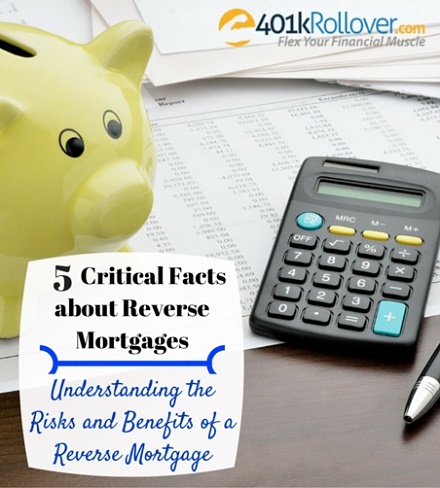Reverse mortgages can be a tool to retire in your home but make sure you understand these six facts
Reverse mortgages have been a hot subject since 2008, the first year the Baby Boomer generation became eligible to retire, and will be so for years to come. The reverse mortgage industry is bringing billions in fees to banking and finance, companies that will continue to push the idea on an aging population.
A reverse mortgage is a special type of loan available to homeowners 62 years and older. You convert a portion of your home’s equity, the difference between the market value and your mortgage, into cash to cover the loan and payments. The reverse mortgage lender pays off any existing mortgages and holds the loan on your home. You don’t have to make any payments on the loan and you might even get some cash back if you had enough equity.
It’s a tempting idea. You get to retire in your home with no house payments for as long as you live there. With a third of retirees living on just social security and few saving enough for retirement, being able to live in your home without mortgage payments makes a reverse mortgage seem like an easy decision for many retirees.
But there are often things the reverse mortgage lender won’t tell you about your loan. Critical facts that might make a reverse mortgage less of a no-brainer.
Things to Remember when Considering a Reverse Mortgage

2) Reverse mortgages only offer a small portion of your home’s value. Mortgage lenders will calculate the maximum mortgage amount on your home depending on your age, interest rates and the appraised value of the home. It varies but I’ve seen many reverse mortgages paying out less than half of the market value of the home. This means you’ll need to have paid off much of your existing mortgage to get any cash out of the reverse mortgage.
3) Reverse mortgages can be expensive. Reverse mortgages are much more expensive than traditional financing. The biggest expense comes from the lender’s origination fee, the reason the industry is so keen to put out all those commercials. Origination fees are usually around 2% on the first $200,000 of home value and then 1% after that, meaning a reverse mortgage on a $350,000 home will cost $5,500 just for the origination fee. Beyond the origination, you’ll have to pay mortgage insurance, closing costs, servicer’s fee and an appraisal. All of this can easily run between $10,000 and $15,000 for an average home.
4) The interest rate on reverse mortgages is higher than traditional rates. Yes, you still have an interest rate on a reverse mortgage. The fact that you are not paying interest every month along with your principal doesn’t mean interest is not being charged. In a reverse mortgage, the lender discounts your home’s value by an interest rate to determine how much it is worth today. Higher rates mean the lender will offer less in cash out value. The fact that people don’t think of interest rates since they aren’t making payments means a lot of lenders get away with exceptionally-high rates on reverse mortgages. The Federal Reserve has started raising interest rates which will mean that rates on all loans, especially reverse mortgages, are likely to increase in the coming years.
5) Your heirs might have trouble keeping the house. When you leave your home or it’s passed to your heirs, the reverse mortgage comes due and they must pay the loan value. Unless there is enough cash in the estate to pay off the mortgage, it usually means the house must be sold to pay off the loan.
Reverse mortgages aren’t necessarily a bad thing. It can be a great way to reduce your monthly living expenses while still being able to stay in your home. The important thing is to understand the risks and facts around reverse mortgages before you make the decision.







